False indigo plant (Baptisia australis) is a long-lived native perennial that adds height and color to garden beds. After blooming, blue false indigo develops black seed pods that add visual interest and food for birds in the winter.
It is deer and rabbit-resistant. Baptisia plant also attracts hummingbirds and beneficial insects like bees and butterflies.
If you’re looking for a low-maintenance native plant that comes back year after year, blue false indigo is a great choice.
This guide will show you how to grow Baptisia australis in your garden. You’ll learn how to plant, water, fertilize, and prune the shrub to keep it healthy.
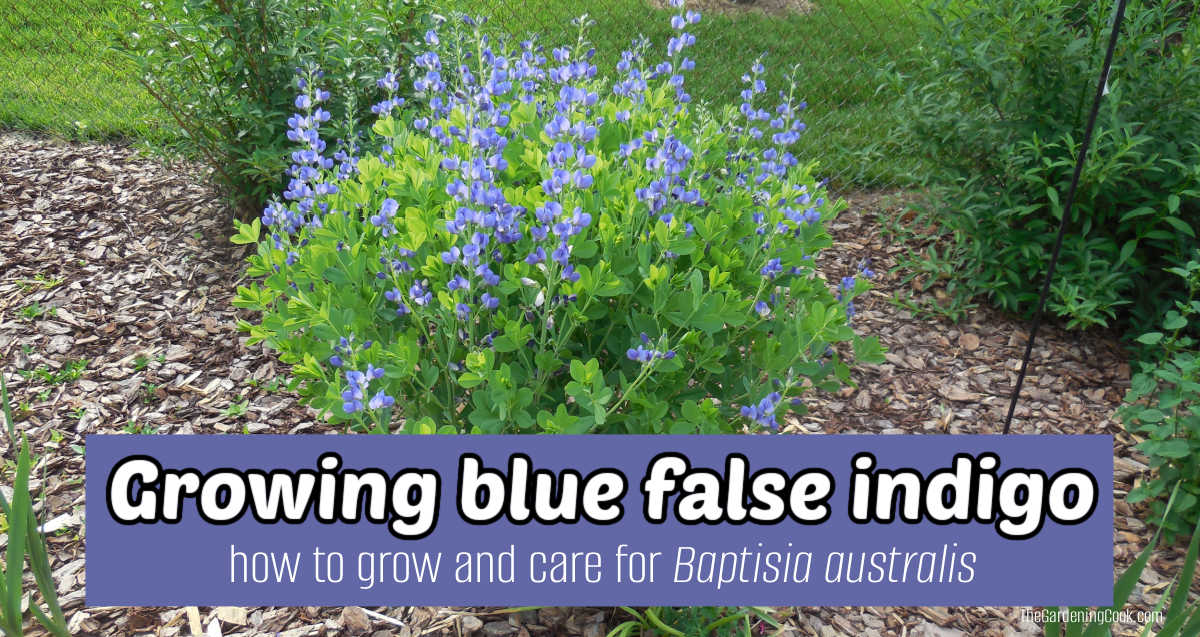
Some of the links below are affiliate links. I earn a small commission, at no additional cost to you, if you purchase through an affiliate link.
False indigo overview
The table below gives an overview of the care of blue false indigo. It highlights the plant’s key characteristics, from sunlight and soil needs to bloom time and hardiness zones.
| Common names | False indigo, blue false indigo, wild indigo, wild blue indigo |
| Botanical name | Baptisia australis |
| Family | Leguminosae |
| Plant type | Perennial |
| Sunlight needs | Full sun |
| Soil requirements | Well-draining soil |
| Soil pH | Slightly acidic to neutral |
| Bloom time | Late spring to early summer |
| Flower color | Deep blue, violet, white, and yellow |
| Growth habit | Upright shrub with a mounding shape |
| Mature size | 3-4 feet tall and wide |
| Hardiness zones | 3-9 |
| Appealing traits | Deer resistant, attracts beneficial insects |
| Native area | Central and Eastern North America |
How to plant Baptisia australis
Plant blue false indigo in early spring or fall, when the weather is mild and rainfall is more frequent.
Avoid crowding the plants by spacing them 3 feet apart. This allows room for growth and good air circulation, which promotes lots of blooms.
Blue false indigo is a slow-growing perennial that takes time to establish. If planted from seed, it takes 2-3 years to bloom.
Nursery plants will usually bloom in the second year. Once established, it blooms reliably in early spring to early summer.
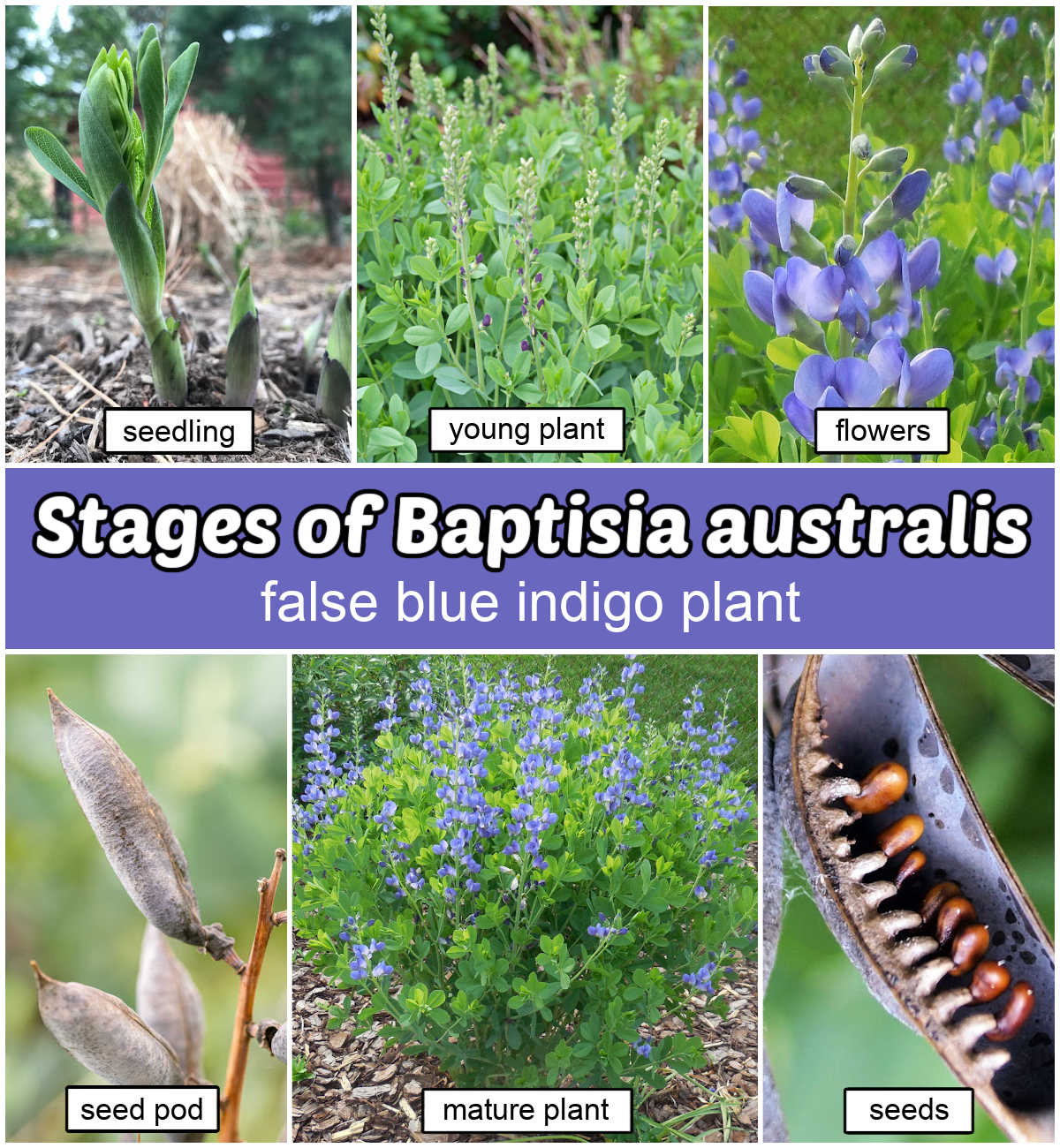
Baptisia false indigo plant care
This perennial plant is easy to care for, even for beginners. These growing tips will ensure that your Baptisia plant grows and thrives.
Sunlight requirements
Blue false indigo does best in full sunlight – at least 6-8 hours of sunlight a day.
While it will tolerate partial shade, the result will be fewer blooms and a leggy appearance. A garden bed that faces south or west is ideal.
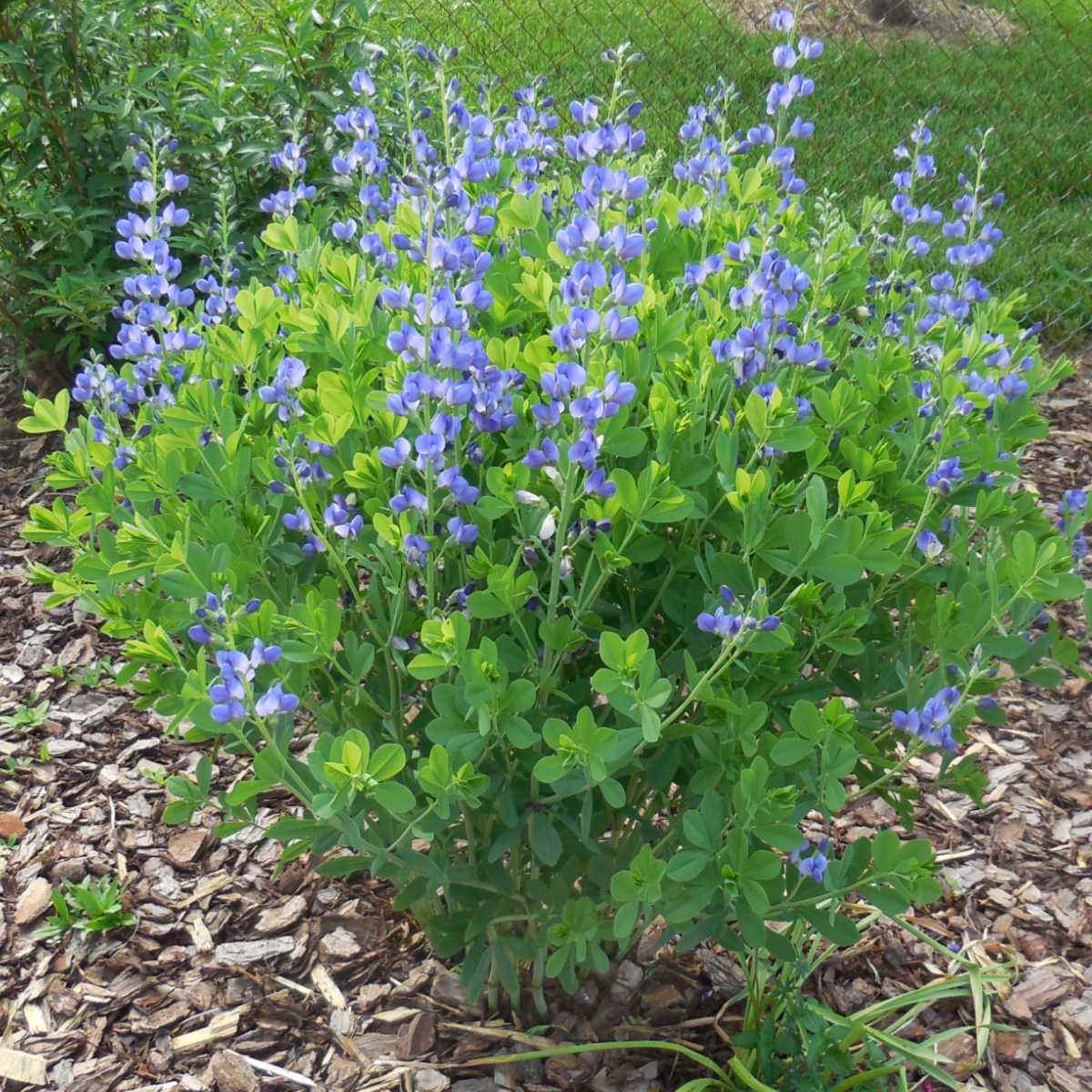
Soil needs for blue false indigo
Baptisia plant will adapt to many soil types – even rocky soils. In fact, if the soil is too rich, the false indigo plant will produce foliage at the expense of flowers.
The key is to make sure it’s planted in well-draining soil. If you have a heavy clay soil, amend it with compost to encourage drainage.
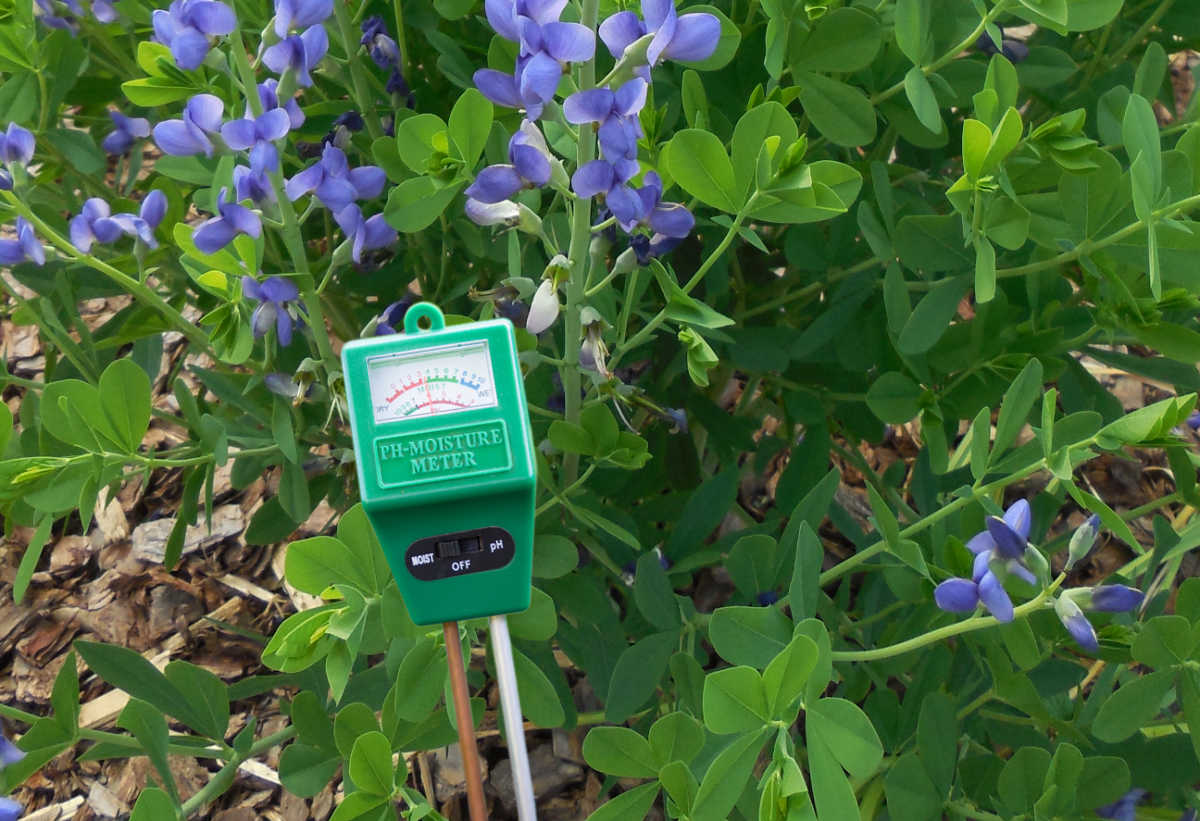
A slightly acidic to neutral soil with a soil pH of 6.0-7.0 is beneficial. You can test your soil pH with a soil meter.
Watering requirements
Wild indigo needs regular watering during the first season to produce a strong root system. Water deeply, then allow the soil to dry out between waterings.
The plant has a long tap root that allows it to get moisture and nutrients from deep in the soil. This makes it very drought-tolerant once established.
Fertilizing needs for blue indigo
Baptisia false indigo plant belongs to the legume family. It does not require fertilization.
It enriches the soil by performing nitrogen fixation, which is a natural process where blue indigo converts nitrogen from the air into a form the plant can absorb and use.
Baptisia flowers
The flowers of the false indigo plant are one of its standout features. The shrub produces tall, upright flower stems that reach 12-24 inches long.
The classic color of Baptisia flowers is deep blue to violet, but some hybrids produce white, yellow, and bicolor blooms. They appear in late spring to early summer and last for several weeks.
The flowers are very attractive to beneficial insects.
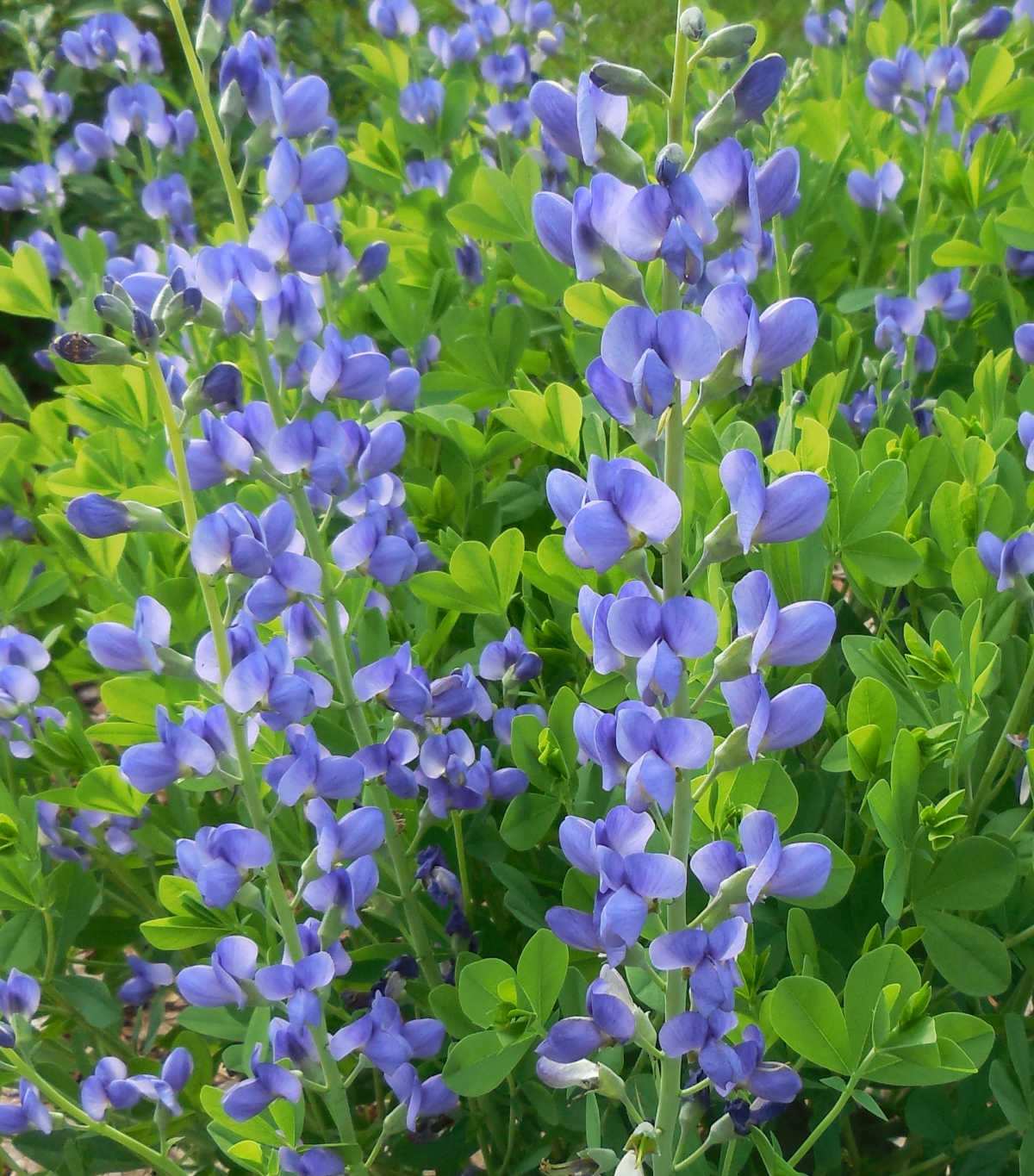
When the blooms fade, they are replaced by black seed pods, which add late-season interest.
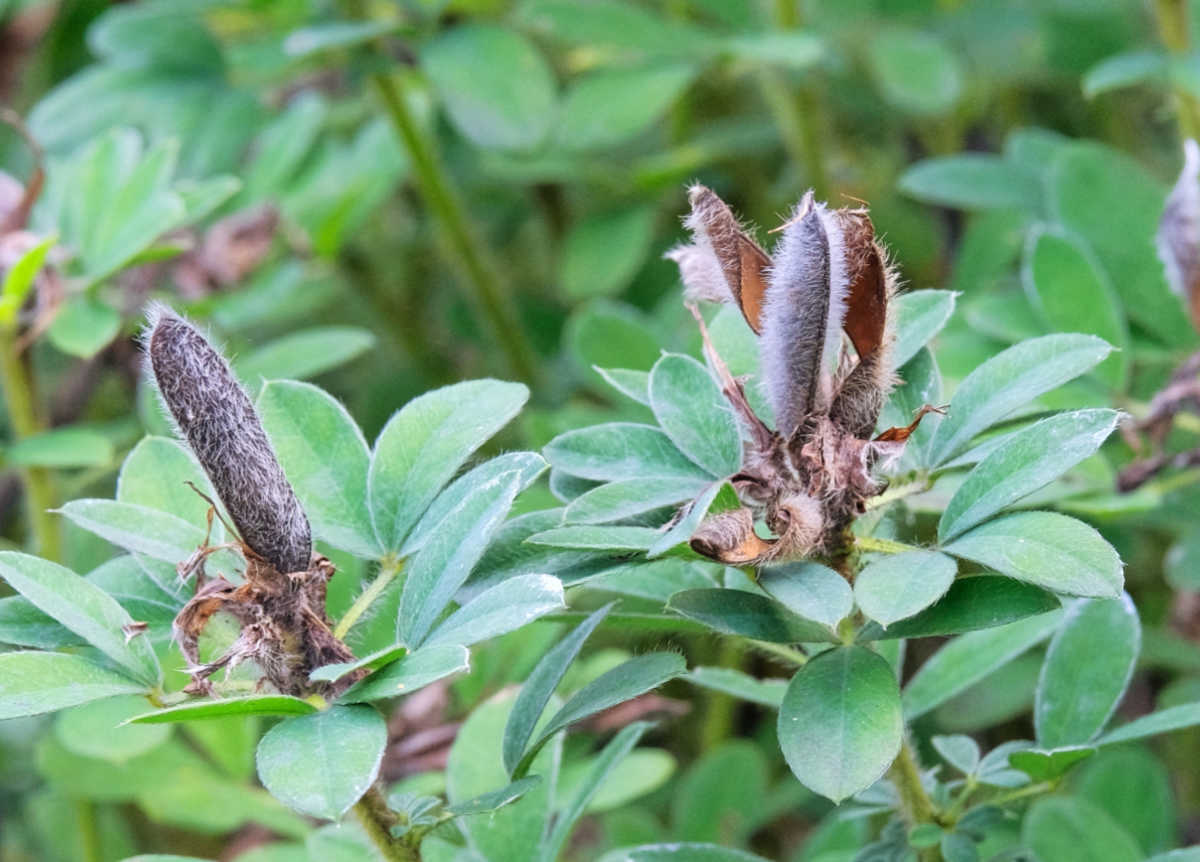
Pruning and maintenance of Baptisia australis
You don’t have to deadhead the flowers, but you can if you’d like to keep the plant looking more tidy. If you don’t deadhead your false indigo plant, it will produce seed pods that add winter interest and a food source for birds.
In late fall or early winter, you should cut the previous season’s stems close to the ground. It creates new flowering stems each year.
Pests and problems for wild indigo
False blue indigo is normally trouble-free and rarely bothered by insects and disease. This makes it a great choice for a low-maintenance garden.
It has a bitter taste that makes it resistant to both deer and rabbits. Occasionally, you might see weevils or caterpillars on the plant. These can easily be removed by hand.
Baptisia australis propagation
Blue false indigo can be propagated by several methods:
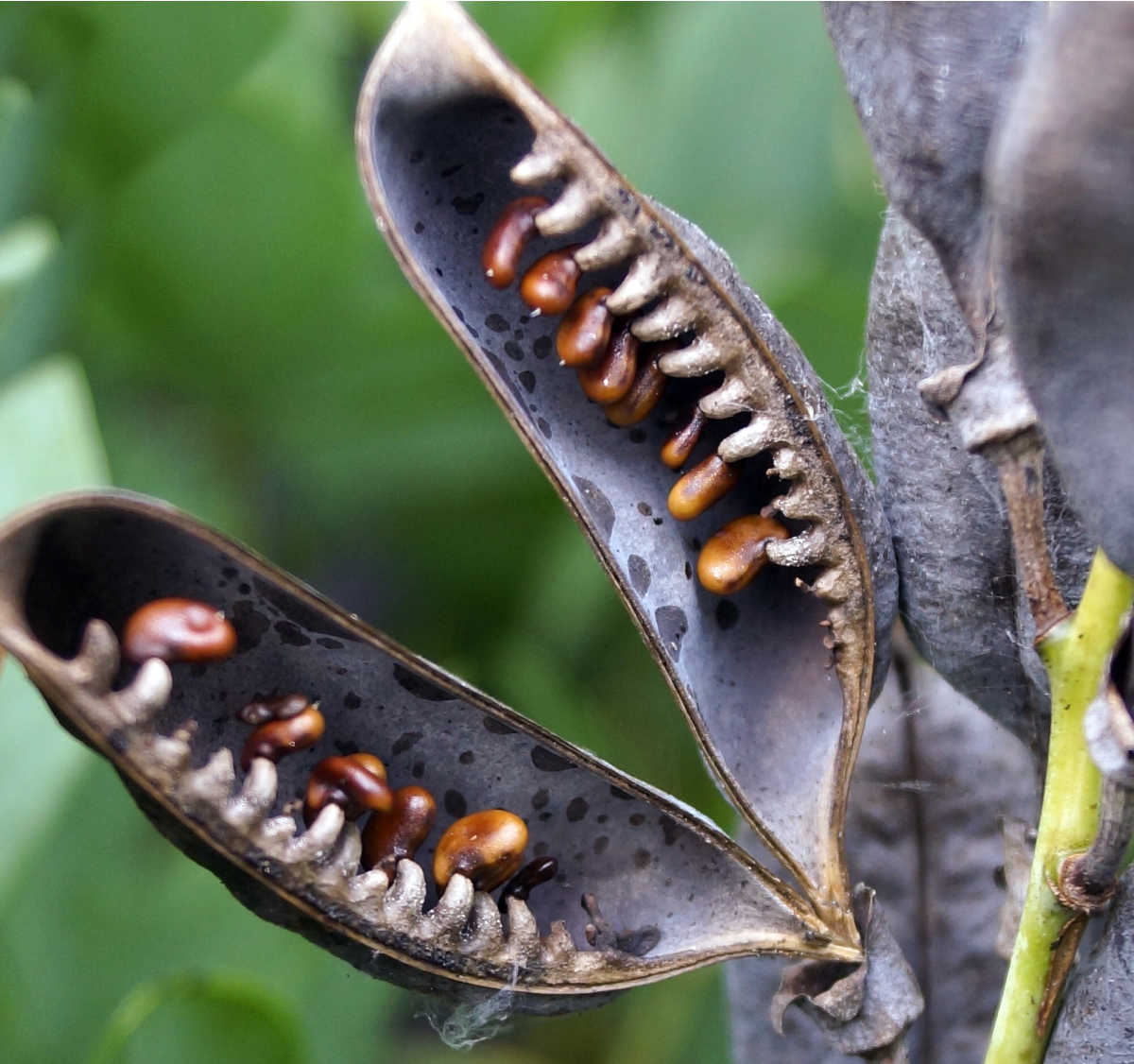
- From seed – Gather seeds in late summer or early fall when the false indigo seed pods are dry. They can be sown directly into the ground outdoors in the fall. Plants grown from seed take 2-3 years to bloom.
- Stem cuttings – Take softwood cuttings in late spring or early summer. Place in moist soil. This method is less successful than plants grown from seed, but faster to bloom if the cuttings take.
- Division – Blue false indigo is difficult to transplant or divide once its mature, because of the plant’s long tap root. Attempting to divide it can cause stress to the plant and possibly kill it, especially if its well-established.
Blue false indigo plant care tips infographic
If you’d like a reminder of how to grow blue false indigo, you can print out this high-resolution infographic. You can also get the blue indigo care tips from the project card at the bottom of the post in a slightly smaller size.
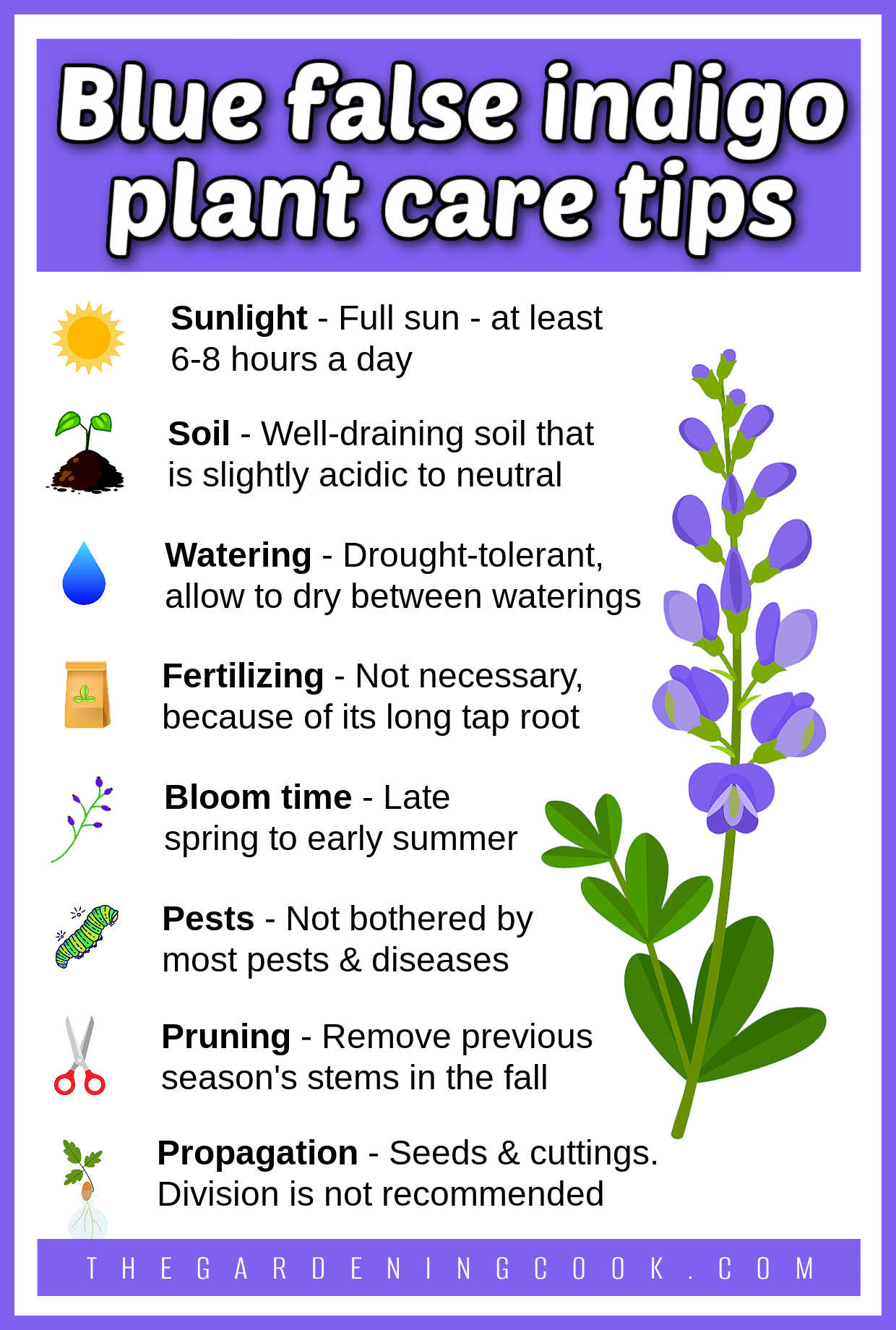
Share this guide about the care of false indigo on X
If you enjoyed learning how to grow and care for Baptisia australis, why not share this guide with a friend? Here is a post to get you started:
Want a hardy, low-maintenance perennial with stunning blue blooms? Try growing a false blue indigo plant! ☀️🪻Learn everything you need to know on The Gardening Cook! #BaptisiaAustralis #GardenTips #Perennials #BlueFlowers… Share on XPin this post for growing a false indigo plant
Would you like a reminder of this post for blue false indigo care? Just pin this image to one of your gardening boards on Pinterest so that you can easily find it later.
You can also watch this YouTube slideshow video about the care of false indigo!
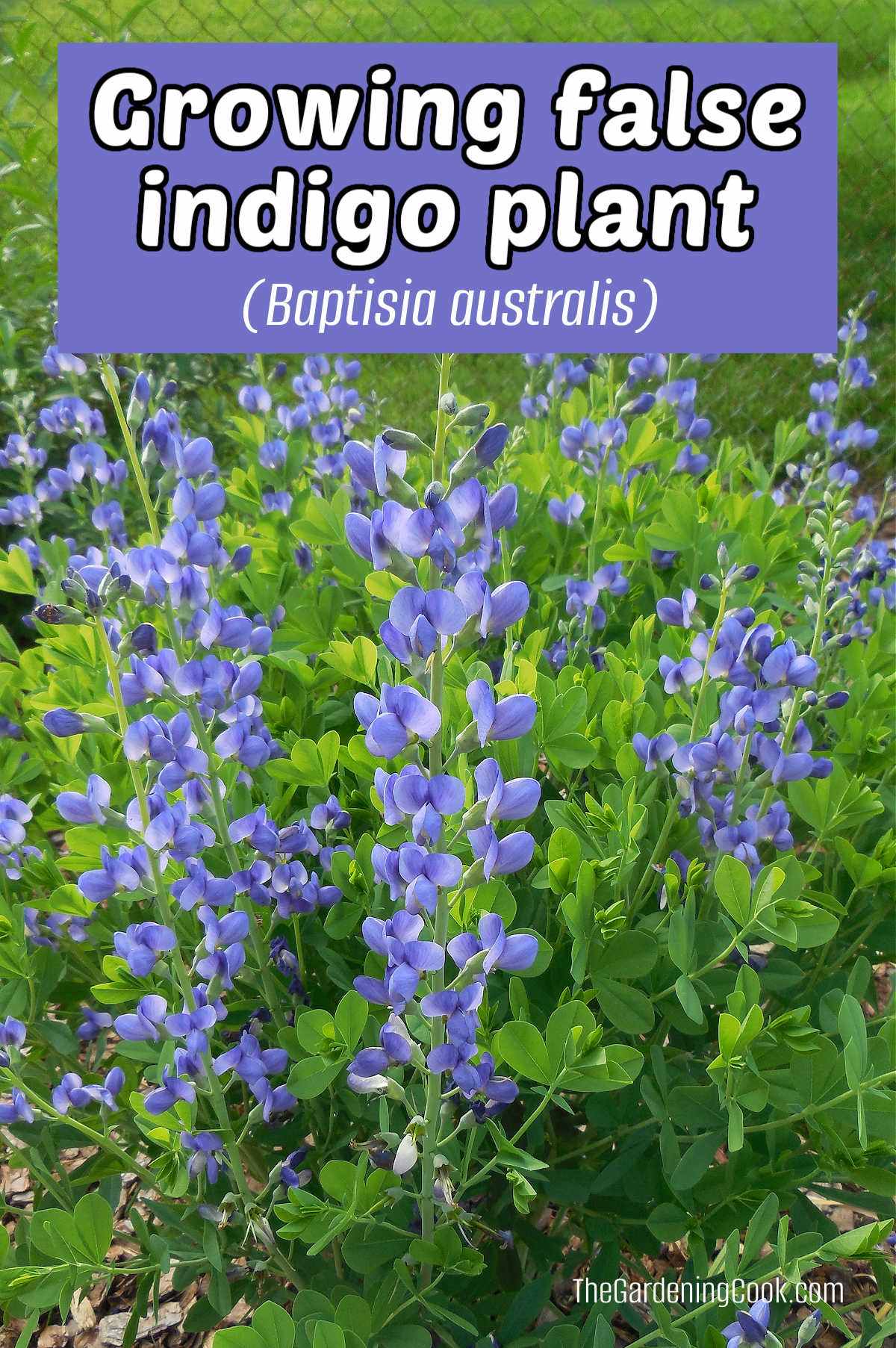
Admin note: This article on growing false indigo bush first appeared on the blog in October of 2013. This post has been updated with all new photos, a care tips printable, and a slideshow video.
False Blue Indigo Plant Care Printable
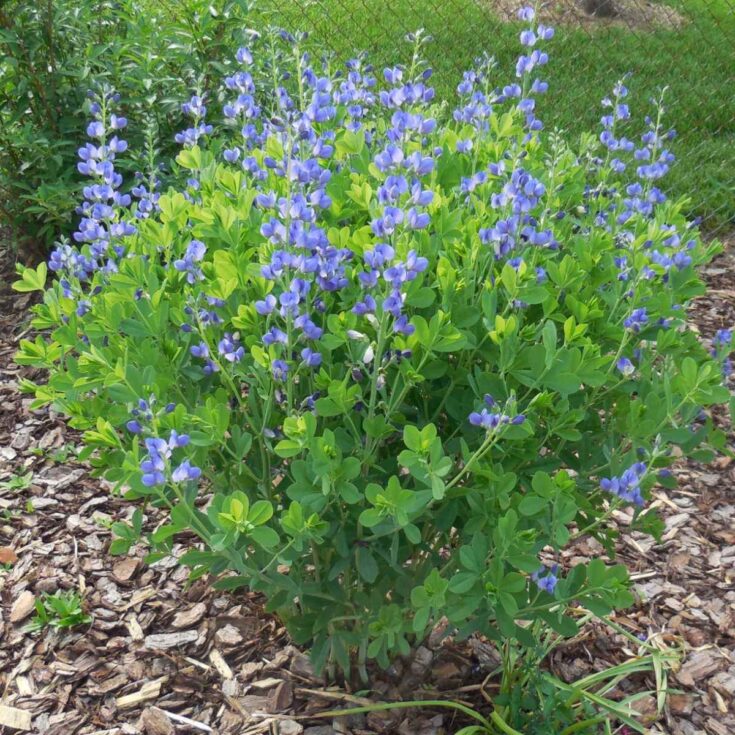
False blue indigo (Baptisia australis) is a native perennial with flowers that attract both butterflies and beneficial insects.
The plant is easy to grow, even for beginners.
Download this printable showing how to care for blue false indigo plant and save it for future reference.
Materials
- Printer paper
Tools
- Computer
- Printer
Instructions
- Load your computer paper into your printer.
- Using the print function on this card will give you a list of plant care tips for false blue indigo that fills about 3/4 of an 8.5 x 11-inch sheet of paper.
- Choose portrait layout and, if possible, "fit to page" in your settings. Doing this will fill the entire page.
- Alternatively, you can use this link to print the Baptisia plant care infographic as a high-resolution image, using the print feature in your browser window.
- After you get this list of plant care tips, you can use them for future reference.
- Please note: Free gardening printables take a long time to make. This list of Baptisia australis care tips is for personal use only. If you are sharing this list (and thank you for that!), please link directly to this post and not to the actual image. We appreciate your help in supporting the site. This gardening printable may not be used for any retail purpose or mass distribution.
Notes

Recommended Products
As an Amazon Associate and member of other affiliate programs, I earn from qualifying purchases.



sophie maziarz
Tuesday 23rd of July 2019
will a hosta root from a leave cutting?
Carol
Tuesday 23rd of July 2019
Yes, you can root hosta from leaf cuttings but you have to cut the leaf with a bit of the root attached, and a few small roots is better. Put the leaf with roots in water, change the water frequently until there are enough roots growing to pot up the leaf.
This is not the best way to propagate hostas. Division is best.
Ellen Doerr
Wednesday 6th of June 2018
I want to know if Baptista, or false blue indigo can grow in the presence of juglone from a mature black walnut tree. Thx
Carol
Thursday 7th of June 2018
Hi Ellen. False indigo is one of many plants that can be affected by juglone. Rhubarb, tomatoes, peonies, lilies, asparagus, blueberry, columbine, mums and cabbage are others. These plants should not be planted near black walnuts, as they will grow poorly and may die. Carol
Sheila
Sunday 21st of June 2015
Can you explain how to propagate false indigo from cuttings? When should this be done? Does it take a long time for cuttings to root, grow, and bloom? Thanks!
admin
Sunday 21st of June 2015
Hi Sheila. I normally propagate this plant from divisions since this is a super easy to do it. If you don't have a plant but can get some cuttings, it will take. To propagate them, take 1- to 2-inch tip cuttings from semi-soft or soft growth during late spring or early summer. Dip the cuttings in a powdered rooting hormone and place them pots in a well draining sterilized rooting medium in a shady area. They need high humidity to take.Enclose the pots in clear plastic and insert stakes to keep the plastic from touching cuttings. Mist the foliage once a day, if you can. Pot the cuttings up after they have rooted—which generally takes about four weeks. Carol